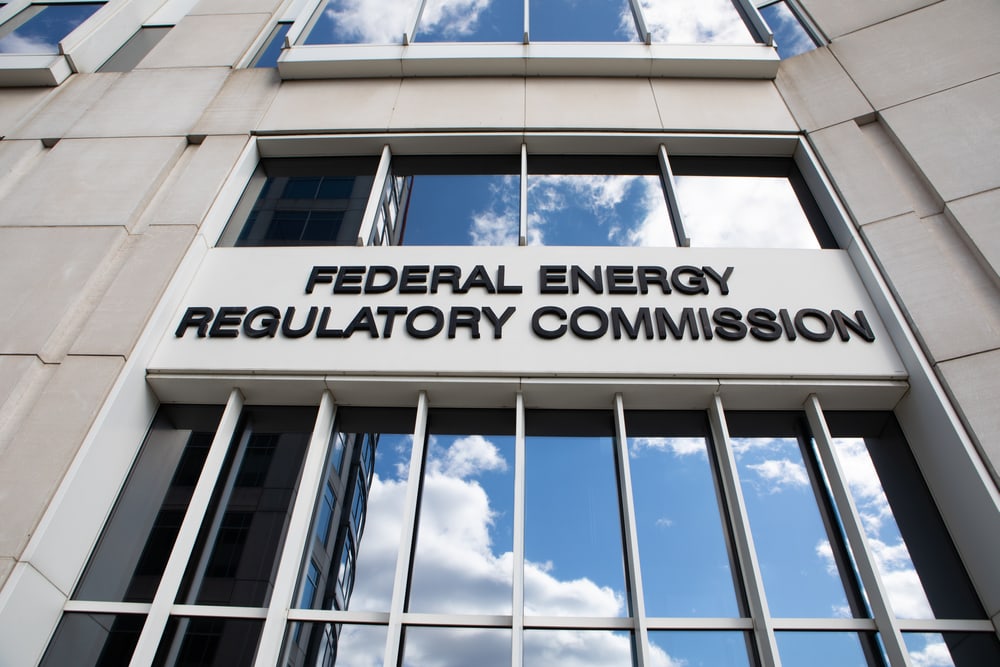Bigger, Fewer, Riskier: The Evolution of U.S. Banking Since 1950
The total assets of JPMorgan Chase, the biggest U.S. bank, are now about $2.6 trillion. The total assets of the entire American commercial banking system in 1950 were $167 billion. In nominal dollar terms, Morgan by itself is more than 15 times as big as all the banks in the country together were in 1950, when Harry Truman was President and the United States was enjoying an economic boom after the cataclysms of the Depression and the Second World War. The fourth largest bank today, Wells Fargo, with $1.9 trillion in assets, is 11 times as big as the whole banking system was then.
Of course, there has been a vast price inflation and depreciation of the dollar over that time, so that a dollar today is worth about what a dime was in 1950. Adjusting the 1950s number for total banking assets to 2018 dollars brings it to $1.7 trillion. Thus in inflation-adjusted terms Morgan alone is still about 1.5 times as big—and Wells Fargo 1.1 times as big—as the whole banking system in the 1950s. Are these banks “too big to fail”? Of course they are. But so were the biggest banks in 1950.
On average over the past seven decades, banking assets and loans have grown more rapidly than the U.S. economy. In 1950, total banking assets were 56 percent of a GDP of $300 billion. Now at about $16.5 trillion, they are more than 80 percent of a GDP topping $20 trillion. Total bank loans relative to GDP grew even faster than banking assets did, from 18 percent of GDP in 1950 to 45 percent today.
Thus banking both in absolute terms and relative to the economy has gotten much bigger over the decades, but there are many fewer banks than there used to be.
“Ours is a country predominantly of independent local banks,” approvingly said Thomas McCabe, then Chairman of the Federal Reserve, in a commencement address in 1950. As McCabe observed, banking was then mostly a local business. There were at that point 13,446 commercial banks. The U.S. population was 153 million. Now there are 4,774 commercial banks for a population of 329 million. So as the American population has more than doubled, the number of commercial banks dropped by 64 percent.
In 1950, there were also 5,992 savings and loan institutions. Today there are 703, so the total of insured depositories fell from 19,438 in 1950 to 5,477 today, or by 72 percent. The previous multitude of banks was the result of unique American politics in which agrarian interests protected small, local institutions. The reduced numbers have moved closer to what a market outcome would ordain. We can expect the consolidation to continue.
As to risk, in the entire decade of the 1950s, there were a mere 28 commercial bank failures—only 0.2 percent of the average number of banks. But banking got a lot riskier as time went on, particularly in the financially disastrous 1980s. In that decade, 1,127 commercial banks failed—40 times the failure rate of the 1950s. Maybe the bankers hadn’t gotten smarter, although they certainly employed more MBAs. State and Federal regulators didn’t appear any smarter either.
In addition to the bank failures, 909 savings and loans failed in the 1980s, bringing the total depository failures for the decade to 2,036—about four per week over ten years. Tough times! When the savings and loan industry collapsed, its government deposit insurer, the Federal Savings and Loan Insurance Corporation, also went broke, triggering a $150 billion taxpayer bailout.
The 1990s were not as bad as the 1980s, but 442 commercial banks (16 times as many as in the 1950s) and 483 savings and loans failed, for a total of 925.
The Federal Reserve optimistically announced that the 21st century heralded a new, stable era—“The Great Moderation.” Soon after that, however, came financial crisis and panic, showing once again that bankers and regulators have not gotten smarter, despite the addition of many PhDs in mathematics and science to the ranks of the MBAs in the finance industry. Ben Bernanke, then Chairman of the Federal Reserve, judged in 2006 that “banking organizations of all sizes have made substantial strides over the past two decades in their ability to measure and manage risks.” That was just before the 2007-09 financial crisis. Apparently they hadn’t made such big strides after all.
Since 2000, 573 depository institutions have failed, of which 486 have been commercial banks. There would have been more failures without the government’s emergency TARP investments in banks, improvised government guarantees, and other forms of bailouts. These include the bailouts of the insolvent Fannie Mae and Freddie Mac, much of whose debt was held by banks, as was encouraged by regulation.
Should we want a banking system with no failures, as was virtually the case in the 1950s? Of course not. As the distinguished economist Alan Meltzer put it, “Capitalism without failure is like religion without sin.” Economic growth requires risk-taking and hence the failures that go with it. But we don’t want too much systemic risk, or for the banking system to collapse from time to time. Since 1950, the United States has experienced both extremes. No one knows how to achieve the golden mean.
We can see how much American banking has changed in the course of one lifetime. But one thing did not change: the tight connection between banking and the government. As banking scholar Charles Calomiris has convincingly summed it up, all banking systems are a deal between the politicians and the bankers.
Of course, the details of the deal shift over the decades. Congress frequently legislates about banking (as detailed further below). One watershed banking enactment was the Federal Reserve Act of 1913, which created the U.S. central bank, the proper role of which was still being debated in 1950. At the time of its origin, it was thought that the Federal Reserve would end financial crises and panics: obviously it didn’t and relative to this hope the act was a failure. But the act was a definite success at creating what it called an “elastic currency”—the ability of the Federal Reserve to create more money and allow banks to expand. This ability in its original form was subject to the gold standard, which meant keeping dollars freely convertible to gold. We today can hardly imagine then-prevailing idea that you could go to your bank any time and turn in your paper dollars for gold coins minted by the United States at a fixed parity rate. This idea was only a memory by 1950, but under the 1944 Bretton-Woods agreement, the U.S. government was still promising to foreign governments that they could redeem dollars for gold.
In 1971, after various dollar crises, the government reneged on this commitment, which was the last vestige of the gold standard. With that, the dollar became far more elastic than the authors of the Federal Reserve Act could ever have imagined. The Federal Reserve became able to expand the currency and the credit base of banking by as much as it wanted. It could either print up more paper dollars, or more directly, simply credit the deposit accounts banks have with it to expand the supply of money. This can be done without limit except for the Federal Reserve’s own judgment and the extent of political controversy it is willing to endure.
Since 1950, an essential banking system development is that the Federal Reserve has grown ever more prominent, more prestigious and more powerful. Whether a republic should trust such immense money power to the judgment (which is actually the guessing) of its central bank is a fundamental political question to which the answer is uncertain.
But it is certain that the banking system, including the central bank as a key component, is highly useful to governments, especially to finance wars. A well-developed banking system that can lend large sums of money to the government is a key military advantage. This is a classic element in banking. The deal between politicians and bankers that created the Bank of England in 1694 was that the new bank would lend the government money to finance King William’s wars, in exchange for monopoly currency issuing privileges. U.S. national banks were created in 1863 to finance the Union armies in the Civil War; they bought government bonds and in exchange got to issue a national currency. The Federal Reserve first established its importance by lending money for the purchase of government bonds to finance American participation in the First World War. The young Fed “proved in war conditions an extremely useful innovation,” as a 1948 study of American banking observed.
The banks of 1950 were stuffed with Treasury securities as a result of their having helped finance the Second World War. At that time, the Federal Reserve was buying as many Treasury bonds it took to keep the interest rate on long bonds at 2.5 percent, to keep down the interest cost to the government. This was also meant to keep the market price of the banking system’s huge bond portfolio steady.
At that point, the banks in total owned more Treasury securities than they had in loans. Treasuries were 37 percent of their total assets—an unimaginably high proportion now. Total loans were only 31 percent of assets—now unimaginably low. These proportions made the balance sheet of the banking system very safe. In remarkable contrast, banks today have merely 3 percent of their assets in Treasury securities (see graph 3).
In the banking system of 1950, reflecting the experience of the 1930s, the government was intent on protecting the banks by reducing competition for and among them. Arthur Burns, who was Chairman of the Federal Reserve 1970-78, looked back from 1988 in The Ongoing Revolution in American Banking to explain the 1950s banking regime:
The legislation suppressed competition not only among banks but also between banks and other financial institutions. The ability of banks to compete with one another geographically was limited by rules on chartering and branching. No new bank could set up business without acquiring a national or state charter, and the authorities were disinclined to grant a charter if existing banks would suffer. . . . The ability of banks to compete with one another for demand deposits was limited by a prohibition against payment of interest on such deposits. . . . Banks could offer interest on time and savings deposits . . . but the amount they could pay was limited by a regulation known as Reg Q. . . . Competition between banks and other financial institutions was limited by restrictions on the kind of services each could offer.
In short, the government restricted competitive entry and limited price and product competition. The design was to promote safety by effectively having a banking cartel, with the government as the cartel manager.
This cartel idea was removed step by step in succeeding decades. The Regulation Q price controls, a big political deal in their day, proved a painful problem in the severe “credit crunches” of 1966 and 1969. They were obviously outdated by the time interest rates went into double digits in the 1970s and 1980s, and were belatedly removed. As the 1960s became the 1970s, U.S. banking had become more competitive, innovative, international and interesting, but also riskier. Banking scholars could discuss “the heightened entrepreneurial spirit of the banking industry” in 1975. Of course, there cannot be a competitive market without failures, in banking as in everything else, and we have observed the failures of the 1980s, 1990s and 2000s. But the tight link between banking and the government continued.
By the 1950s, banks had become accustomed to depending on having a lot of their funding guaranteed by the government in the form of deposit insurance. Although many banks had originally opposed the idea as promoting weak and unsound banking, they became and remain today absolutely hooked on it. It has come to seem part of the natural financial order.
But government guarantees of deposits, as is known to all financial economists, tend to make banks riskier, although it simultaneously protects them against bank runs. This combination of effects is because their depositor creditors no longer have to worry about the soundness of the bank itself. Consequently, unsound banking ventures can still attract plenty of funding: This is called “moral hazard,” and its importance in every financial crisis of recent decades can hardly be overstated. To try to control the risk to itself generated by moral hazard, the government must regulate more and more—but its attempt to control risk in this fashion has often failed.
Nonetheless, the extent of deposit insurance has been increased over time. The year 1950 saw a doubling in the amount of deposit insurance per depositor from $5,000 to $10,000. Since then, it has grown 25 times larger in nominal terms, to $250,000, and three times bigger in real terms. These increases are shown below.
As Arthur Burns observed, banks were formerly forbidden to pay interest on demand deposits (checking accounts). In 1950, these deposits comprised the great majority of the banks’ funding—75 percent of the total liabilities of the banking system. That meant that by law 75 percent of the funding had zero interest cost. I well remember as a bank trainee in 1970 having an old banker explain to me: “Remember that banks succeed or fail according to this one number—demand deposits.”
Those days are gone. Demand deposits now are only 11 percent of bank liabilities, and banks can pay interest on them. The graph below shows the historical decline of demand deposits in bank balance sheets.
One of the riskiest classes of credit are real estate loans, which are central to most banking crises. In 1950, real estate loans were only 26 percent of the total loans of the banks. But since then, having accelerated in the 1980s, they have grown to be the predominant form of bank credit, reaching 57 percent of all loans in 2006, just before the real estate collapse. They are now 47 percent of all bank loans, and in the majority of banks, those under $10 billion in total assets, are 72 percent of loans.
We still use the term “commercial banks,” but a more accurate title for their current business would be “real estate banks.”
We may consider together the trends of reduction in the lowest-risk assets, the decline of demand deposit funding, and the shift to riskier real estate credit by combining graphs 3, 4 and 5 into graph 6. The balance sheet of the banking system from 1950 to now has utterly changed.
During these seven interesting banking decades, Congress has been busy legislating away. This is natural: As long as the close connection of the government and banks continues, so will their dynamic interaction through politics, and so will congressional attempts to direct or improve the banking system, or to fix it after the busts that recur in spite of repeated attempted fixes.
Below is a list of the remarkable amount banking legislation since 1950. The mind boggles at the vast volume of congressional hearings, lobbyist meetings, and political speeches all this legislation entailed.
- Federal Deposit Insurance Act of 1950
- Bank Holding Company Act of 1956
- Bank Merger Act of 1960
- Bank Merger Act of 1966
- Bank Holding Company Act Amendments of 1966
- Interest Rate Adjustment Act (1966)
- Financial Institutions Supervisory Act of 1966
- Fair Housing Act (1968)
- Truth in Lending Act of 1968
- Emergency Home Finance Act of 1970
- Fair Credit Reporting Act (1970)
- Bank Holding Company Act Amendments of 1970
- Equal Credit Opportunity Act (1974)
- Real Estate Settlement Procedures Act of 1974
- Home Mortgage Disclosure Act of 1975
- Fair Debt Collection Practices Act (1977)
- Community Reinvestment Act (1977)
- Federal Reserve Reform Act of 1977
- International Banking Act of 1978
- Financial Institutions Regulatory and Interest Rate Control Act of 1978
- Depository Institutions Deregulation and Monetary Control Act of 1980
- Garn-St Germain Depository Institutions Act of 1982
- Competitive Equality Banking Act of 1987
- Financial Institutions Reform, Recovery, and Enforcement Act of 1989
- Federal Deposit Insurance Corporation Improvement Act of 1991
- Housing and Community Development Act of 1992
- Riegle Community Development and Regulatory Improvement Act of 1994
- Riegle-Neal Interstate Banking and Branching Efficiency Act of 1994
- Economic Growth and Regulatory Paperwork Reduction Act of 1996
- Gramm-Leach-Bliley Act of 1999
- International Money Laundering Abatement and Financial Anti-Terrorism Act of 2001
- Sarbanes-Oxley Act of 2002
- Check Clearing for the 21st Century Act (2003)
- Fair and Accurate Credit Transactions Act of 2003
- Federal Deposit Insurance Reform Act of 2005
- Financial Services Regulatory Relief Act of 2006
- Housing and Economic Recovery Act of 2008
- Emergency Economic Stabilization Act of 2008
- Helping Families Save Their Homes Act of 2009
- Credit CARD Act of 2009
- Dodd-Frank Wall Street Reform and Consumer Protection Act (2010)
- an Act to instruct the Inspector General of the Federal Deposit Insurance Corporation to study the impact of insured depository institution failures (2012)
- Reverse Mortgage Stabilization Act of 2013
- Money Remittances Improvement Act of 2014
- Credit Union Share Insurance Fund Parity Act (2014)
- an act to enhance the ability of community financial institutions to foster economic growth and serve their communities, boost small businesses, increase individual savings, and for other purposes (2014)
- American Savings Promotion Act (2014)
- FAST Act (this cut Federal Reserve dividends to large banks) (2015)
- Economic Growth, Regulatory Relief and Consumer Protection Act (2018)
In conclusion, we may consider three different perspectives on long-term banking change.
In the 1980s an old employee was retiring after 45 years with the Bank of America, so the story goes. The chairman of the bank came to make appropriate remarks at the retirement party, and thinking of all the financial developments during those years, asked this long-serving employee, “What is the biggest change you have seen in your 45 years with the bank?” His reply: “Air conditioning.” Arthur Burns summed up 1950s banking in this way: “This was a simple system, operating in a simple financial world.” But that is not how it seemed at the time, or at any time. As William McChesney Martin, Chairman of the Federal Reserve 1951-70, said in a 1951 speech to the American Bankers Association: “We are all painfully aware today of the manifold and overpowering complexities of our modern life.”
That feeling characterizes all the years from then to now.






